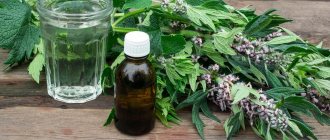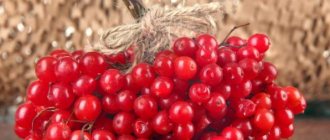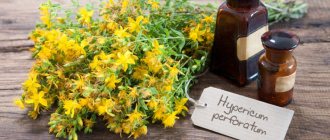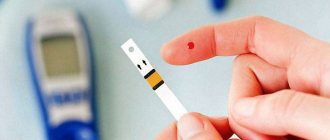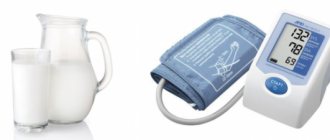In this article we will tell you:
- Composition and properties of turmeric
- Rules for using turmeric, dosage
- Precautions, contraindications, side effects of turmeric
- How does turmeric affect blood pressure: does it increase or decrease it?
- Recipes with turmeric to normalize blood pressure
- Basics of choosing a quality spice
Turmeric
(Curcuma longa or Indian saffron) is a root plant from the ginger family that is often consumed for its anti-inflammatory, antioxidant, and digestive properties.
Turmeric has been used for thousands of years as a dye, spice and for medicinal purposes. Sanskrit treatises describe the use of this spice back in ancient India. To this day, turmeric continues to be researched as an alternative medicine for many common illnesses, injuries and chronic illnesses.
In the article we will consider a frequently asked question: how does turmeric affect blood pressure, does it increase or decrease it?
Composition and properties of turmeric
The English name for turmeric, “turmeric,” is derived from the Latin “terra merita” (“good earth”), given to it for the golden hue of its root. The spice is obtained from the Curcuma longa plant, which belongs to the ginger family. The turmeric stalk is dried and ground into a yellow powder with a bittersweet flavor known and loved by many.
The main component of turmeric that deserves special attention is curcumin
. It is believed that the polyphenol curcuminoid may have medicinal properties and help the body with inflammation, degenerative eye diseases and even metabolic syndrome.
What are polyphenols?
Polyphenols
- products of plant metabolism designed to protect them from ultraviolet radiation, insects, bacteria and even viruses. They determine the bitterness, acidity, color, taste and even the oxidative activity of foods.
Polyphenols (such as curcuminoid) have become popular after many epidemiological studies have shown that a diet rich in polyphenols can protect the body from inflammation. At the molecular level, polyphenols stabilize oxidation reactions in cellular components.
Oxidation can damage cell organelles, which include mitochondria
- cellular “power plants” responsible for producing the bulk of cellular energy using inhaled oxygen.
It has been noted that consuming antioxidant-rich foods such as berries, nuts, healthy fats and turmeric can curb oxidative damage.
What are the benefits of curcumin?
Review studies suggest that curcumin may help limit markers of oxidative stress in the blood by affecting free radical scavenging enzymes.
Inflammation
is a set of reactions that occur in any tissue in response to an irritating effect from inside or outside the tissue. Inflammation occurs to protect tissue and eliminate the root cause of cell damage, but prolonged uncontrolled inflammation can further damage tissue.
In this case, the cells synthesize and release signaling molecules, entering a vicious cycle of creating new inflammatory cells and molecules, which only increases inflammation.
In many studies, curcumin has demonstrated the ability to block these cellular signals, thereby limiting the number of inflammatory proteins and cells.
However, a fair number of these studies report low bioavailability of curcumin. Once ingested, it is poorly absorbed in the gastrointestinal tract and is quickly processed and excreted from the body.
Consuming curcumin in lecithin-rich foods such as eggs, vegetable oils, and buttermilk may improve its absorption in the intestines.
In studies where curcumin was taken along with piperine (a natural component of black pepper), its concentration increased 20-fold due to the fact that piperine slows the metabolism of curcumin.
Turmeric is an excellent product with these types of effects
:
- bactericidal;
- antiseptic;
- healing;
- pain reliever;
- antifungal;
- diuretic;
- antispasmodic;
- choleretic;
- antioxidant.
In this case, both internal and external use is allowed. Diseases in which curcumin has shown a positive effect on the course and activity of symptoms
:
- Arthritis
Arthritis comes from the Greek word arthron, which means joint, and the Latin word itis, which means inflammation. Thus, arthritis literally means "inflammation of a joint." The most common types of arthritis are osteoarthritis (about 95%) and rheumatoid arthritis (about 5%).
Research shows that turmeric helps relieve pain from both rheumatoid arthritis and osteoarthritis.
Scientists have found that turmeric can reduce inflammation to the same extent as many popular prescription medications. This herb can alter NF-κB signaling and reduce pro-inflammatory signals that lead to arthritis pain in a person. Doctors call these chemicals cyclooxygenase (COX-2) and 5-lipoxygenase (5-LOX).
Study
: Efficacy of Turmeric Extracts and Curcumin for Alleviating the Symptoms of Joint Arthritis: A Systematic Review and Meta-Analysis of Randomized Clinical Trials
A 2021 data collection in Tucson, Arizona, found that rheumatoid arthritis patients who self-selected complementary therapies in addition to their typical prescription medications most often preferred turmeric over other types of herbs. The popularity of turmeric was due to its anti-inflammatory properties.
Study
: Natural Product Supplement Use for Rheumatoid Arthritis Self-Management in the United States: A Literature Review
- Oxidative damage
Is the main process by which our body ages and eventually becomes damaged. Examples of oxidation include an apple or avocado left on the kitchen counter turning brown when exposed to air.
Oxidative damage can be caused by sun, air, sugar, processed foods and toxic chemicals. Fruits and vegetables with high concentrations of phytochemicals (plant chemicals) provide our body with antioxidants that help protect it.
Turmeric also exhibits the properties of a powerful antioxidant
either when consumed as a spice in the diet or when taken as a curcumin supplement.
Oxidative damage is widely believed to cause cancer and cause heart disease. According to a 2021 report published in the journal Diseases, turmeric may help prevent oxidation.
Study
: Natural Product Supplement Use for Rheumatoid Arthritis Self-Management in the United States: A Literature ReviewFood Antioxidants and Their Anti-Inflammatory Properties: A Potential Role in Cardiovascular Diseases and Cancer Prevention
- Alzheimer's disease
Alzheimer's disease
is a brain disease that usually occurs in older people.
Dr. Dale Bredersen of the University of California, Los Angeles, who is the author of the 2021 book The End of Alzheimer's, believes turmeric plays an important role in improving symptoms of dementia and Alzheimer's disease.
One scientific study found that turmeric may play a role in inhibiting the formation of amyloid plaque in the brain.
. The accumulation of this material in the brain is thought to be the cause of Alzheimer's disease.
We recommend
“Beneficial properties of avocado: recipes” Read more
A 2021 study published in the Journal of Alzheimer's Disease concluded that turmeric may also play an important role in preventing memory loss.
- Asthma
Asthma
is a common respiratory disease among children and adults. Fortunately, if the cause of asthma is identified and correctly diagnosed, the disease can be successfully treated.
A 2010 study demonstrated improved asthma treatment when turmeric was used in combination with boswellia serrata and licorice root.
The results showed improved prevention of excessive swelling and mucus associated with asthma, reduced inflammation and antioxidant effects.
Study
: Natural anti-inflammatory products and leukotriene inhibitors as complementary therapy for bronchial asthma
A 2014 study published in the Journal of Clinical and Diagnostic Research also concluded that when taken orally, turmeric may help improve lung function in patients with asthma.
Study
: Evaluation of Efficacy of Curcumin as an Add-on therapy in Patients of Bronchial Asthma
- Protects the lungs from acute and chronic diseases
According to an article published in the journal Advances in Experimental Medicine and Biology, curcumin from turmeric may protect the lungs from damage and fibrosis (scarring) caused by radiation, chemotherapy and other toxins.
Animal studies also show that curcumin has protective effects against lung diseases such as chronic obstructive pulmonary disease (COPD), acute respiratory distress syndrome (ARDS), allergic asthma and lung cancer. Researchers believe that curcumin's ability to suppress inflammation makes turmeric an excellent option for relieving symptoms of COPD and stopping the progression of lung cancer.
Study
: Curcumin inhibits COPD-like airway inflammation and lung cancer progression in mice
- Improving liver function, especially in people with NAFLD
The liver is important for filtering the blood and removing toxins from the body. But in people with non-alcoholic fatty liver disease (NAFLD), this function may be impaired due to fat accumulation in the liver. Excess fat can cause inflammation, which can damage the liver and lead to poor liver function.
We recommend
“Beneficial properties of spinach: vitamin composition, recipes, cooking recommendations, contraindications” Read more
But according to a recent study, turmeric or curcumin supplements may help people with NAFLD. Curcumin, in particular, may prevent the progression of NAFLD by reducing the production of free radicals, which are known to cause inflammation. Curcumin also prevents liver damage by stopping the production of inflammatory molecules.
Study
: Efficacy of curcumin/turmeric on liver enzymes in patients with non-alcoholic fatty liver disease: A systematic review of randomized controlled trials
- Colon cancer
Colorectal cancer (CRC) is one of the leading causes of death worldwide. Researchers have found that turmeric may help people with CRC because it can stop cell signaling pathways that contribute to cancer development. It can even be considered as a potential cancer prevention agent.
In fact, a study published in Current Pharmaceutical Design found that curcumin stops the development and growth of colon cancer cells by disrupting the cell cycle and causing apoptosis. Apoptosis is a form of cell suicide that helps keep the body healthy. ridding it of old or damaged cells that could otherwise cause cancer.
Study
: Chemotherapeutic Potential of Curcumin for Colorectal Cancer
Other conditions that studies have shown turmeric can help treat include:
:
- ulcerative colitis (inflammation of the colon);
- oral lichen planus;
- diabetes;
- high blood pressure;
- stomach ulcer caused by bacteria h. pylori;
- stomach upset;
- gallstones (prevention of formation);
- bacterial infections;
- uveitis (inflammation of the eye);
- atherosclerosis and heart disease;
- mercury entering the body (turmeric helps remove it from the body).
Rules for using turmeric, dosage
It is important to observe the daily dosage of the spice so that its excess does not cause harm to health.
For medicinal purposes, adults are allowed to take no more than one tablespoon of seasoning (without a slide) per day. It is better to divide this dose into two doses.
Children up to 20 kg in weight are recommended to consume no more than a teaspoon of spice per day, from 20-40 kg - one and a half to two level teaspoons.
For prevention, it is enough to add one or two pinches of seasoning to food (meat, fish), drinks (tea, nut milk, compote, jelly).
Supplementing with curcumin and turmeric root extracts is another way to obtain curcumin. Product labels list different levels of curcumin extract. Independent quality control laboratories, at the request of the product manufacturer, can verify the actual contents and certify that the actual composition corresponds to the declared composition.
Some curcumin supplements may include other extracts, such as black pepper extract (piperine) or manufacturers' proprietary blends containing plant gum or other lipid compounds to increase curcumin's bioavailability.
Finally, curcumin may also be useful as a topical agent in collagen films, emulsions, sponges, and dressings for skin health.
Curcumin/turmeric supplements are usually taken in doses of 500 mg daily or 500 mg up to 3 times daily.
Features of use for hypertension
If you have high blood pressure, you can use the spicy root:
- in crushed form, washed down with water;
- adding powder to desserts and drinks;
- preparing sauces and seasonings for meat and fish dishes from the crushed root.
When using turmeric for medicinal purposes, it is necessary to monitor the condition of the skin, as symptoms of an individual allergic reaction may appear.
Spicy powder does not belong to the group of main drugs that affect blood pressure. The spice is used to help the body cope with hypertension along with medications. But if the increase in pressure does not occur constantly and hypertension has not taken life-threatening forms, then turmeric should be consumed regularly.
The drug raises vitality, but not blood pressure.
No ads 1
When taking spices, be sure to monitor the body’s reaction. It is necessary to choose a dosage of the drug, such a recipe, so that curcumin benefits the body. Not everyone will be able to immediately feel an improvement, but after a month you can see that turmeric has a positive effect on blood pressure, normalizing its values.
Precautions, contraindications, side effects of turmeric
In addition to its beneficial properties, turmeric also has contraindications.
It is prohibited to use turmeric and products based on it in conditions such as
:
- gastritis, peptic ulcer in the acute and remission stages;
- severe functional liver disorders: hepatitis, cirrhosis;
- chronic diarrhea;
- hypotension;
- children under 3 years of age.
Excessive consumption of seasoning irritates the gastric mucosa, which can cause ulcers. Therefore, it is best to take products based on it during or after meals.
The use of the spice is unsafe for people suffering from cholelithiasis, since the spice has a strong choleretic effect.
Turmeric lowers glucose levels, which should be taken into account when taking medications for diabetes.
Turmeric should be stopped two weeks before elective surgery.
During pregnancy and breastfeeding, you can consume a little spice as part of main dishes, no more than 2-3 times a week.
The spice thins the blood, so it is prohibited to use it simultaneously with anticoagulants, as well as for people with severe blood diseases.
Discuss any possible drug interactions or potential problems with your doctor.
We recommend
“Foods good for the liver: top 30, sample menu for the week” Read more
Contact allergies (itching and rash) to curcumin powder upon direct contact have also been reported. If you experience any of these symptoms, stop taking it immediately.
There is currently no evidence of any long-term effects of long-term use of curcumin, as most studies have taken the extract for 1-3 months.
Although no serious side effects have been reported with curcumin, diarrhea, headache, rash, and yellow stool are possible.
The most important:
If you experience wheezing, difficulty breathing, difficulty swallowing, or swollen lips, immediately stop consuming any curcumin products and call an ambulance.
The main key to the successful use of turmeric will be a sense of proportion, only in this case the body will feel a colossal effect. If you are taking medications, consult your doctor before taking curcumin supplements.
How does turmeric affect blood pressure: does it increase or decrease it?
The spice has a complex effect
:
- reduces blood viscosity, prevents the formation of blood clots;
- reduces cholesterol, restores vascular endothelium, which prevents the deposition of atherosclerotic plaques;
- strengthens the myocardium, increases the strength and speed of blood flow;
- normalizes water-salt balance;
- improves kidney function, stimulates the removal of fluid from the body, relieves swelling;
- cleanses the blood of toxins;
- turmeric contains potassium, which relieves vascular spasms and promotes dilation of arteries;
Turmeric and hypertension
Animal studies were conducted to identify the relationship between spice and high blood pressure. Experimental mice had their blood pressure artificially increased, then curcumin (the main active ingredient of turmeric) was injected. Within an hour the values dropped to normal
.
Scientists noted that the effect of curcumin is similar to antihypertensive drugs that inhibit the production of angiotensin II, which constricts blood vessels. Turmeric reduces its synthesis, the arteries relax, dilate, and blood pressure normalizes.
Targeted nutrition tips
that will increase your energy level by 10 out of 10
From TOP nutritionists of the MIIN
Get tips
Chronic inflammation of the arteries and veins leads to loss of elasticity. Fragile blood vessels are a significant factor that increases the risk of developing hypertension. Research results have shown that turmeric relieves vascular inflammation, restores the elasticity of coronary arteries, arterioles, and capillaries.
Conclusion:
turmeric can be used to lower blood pressure in complex therapy and prevention of hypertension. In advanced forms of arterial hypertension, spice should be considered as an additional means of primary therapy.
Research suggests curcumin may lower blood pressure by regulating angiotensin receptor activity
(a hormone that causes vasoconstriction and increased blood pressure). By blocking angiotensin receptors, curcumin prevents it from interacting with the walls of the artery and thereby prevents vasoconstriction (arterial spasm).
Due to its vasodilating properties and ability to relax blood vessels, curcumin reduces the resistance of blood flow, and therefore reduces blood pressure.
has been shown to lower blood pressure as well as Captopril (a drug used to treat hypertension).
Nanocurcumin is a modified form of curcumin in which curcumin particles are crushed into nanoparticles, which significantly increases its solubility and improves the delivery of curcumin to body tissues, thereby accelerating treatment without any loss or side effects. This method of increasing the bioavailability of curcumin in the production of dietary supplements is considered one of the most advanced and effective.
Considering the ability of turmeric to thin the blood and dilate blood vessels, it is not recommended to use it for hypotension.
A decrease in already low pressure worsens your health - causes lethargy, nausea, and dizziness. A sudden drop can lead to loss of consciousness.
It is allowed to consume a small amount of turmeric as part of second or first courses, but not every day. In this case, you need to monitor your blood pressure levels.
To lower blood pressure, it is recommended to consume 5-7 g (about 2 tsp) of turmeric per day. It is advisable to divide into 2-3 doses.
When first used, it is important to monitor the indicators, since the spice can sharply reduce blood pressure, which will worsen your well-being.
To prevent hypertension, it is enough to eat half a teaspoon a day. Take at one time or divide into 2 doses.
The seasoning can be consumed in its pure form or added to first and second courses.
Who is the spice contraindicated for?
Like any herbal remedy, curcumin has contraindications for use:
- The orange spice causes an allergic reaction. Those who are prone to allergies need to check how the body reacts to the spice. To do this, try only a quarter of a teaspoon of powder and monitor the condition of the body. If a rash, itching, or sneezing appears, you should stop taking the medicinal root.
- Spicy seasonings are not recommended for women during pregnancy and breastfeeding. Their action can have a negative impact on the child's condition.
- The spice causes irritation of the gastric mucosa and pain due to peptic ulcers of the digestive tract.
- Those who suffer from liver dysfunction should use the spice with caution.
Curcumin can cause harm if taken in unlimited quantities, regardless of contraindications. Hypertension as a scourge of modern society cannot be completely cured. Spices are used to maintain normal blood pressure. Turmeric is included in the diet as an additional remedy for high blood pressure and atherosclerosis.
Recipes with turmeric to normalize blood pressure
You can prepare decoctions, infusions, and teas from turmeric for the treatment and prevention of arterial hypertension.
We recommend
“Buckwheat tea: beneficial properties, contraindications and reviews” Read more
Drinks with turmeric cleanse the liver, improve metabolism, heart function, lower blood pressure, and maintain normal levels.
:
- Decoction
: 2 tsp. powder, 400 ml warm water. Drink half a glass 4 times a day. This decoction can be taken for diabetes to improve blood vessels and reduce the risk of complications.
- Infusion
: 1 tsp. powder, 200 ml water. Pour water over the turmeric, put on low heat, and simmer for 10 minutes, without bringing to a boil. Add 1 tsp. honey, a slice of lemon. Drink 2 times. Instead of honey and lemon, you can add a pinch of black pepper. This relieves the symptoms of hypertension well, dilates blood vessels, and increases blood flow.
- Hypotensive tea
. Place 1 tsp in a tea cup. fresh grated plant root or powder, pour boiling water. Leave for 5 minutes and drink. You can add honey (the drink is cooled beforehand), a pinch of cinnamon, and ginger root. This tea cleanses the liver well and reduces bad cholesterol. To quickly lower blood pressure, add black pepper to the tip of a knife instead of ginger.
- Golden milk
used for hypertension, treatment of joints, gastrointestinal tract. Improves metabolism, sleep, psycho-emotional state. For 100 ml of hot milk, half a teaspoon of powder is used. Drink 3 times a day, prepare immediately before use. For problems with the nervous system or insomnia, it is recommended to drink the last drink an hour before bedtime.
- To cleanse blood vessels from atherosclerotic plaques
It is useful to drink a turmeric drink with lemons. 2 small fruits are grated, add 1 tbsp. l. seasonings, pour a liter of lukewarm water. Leave overnight. Take 100 ml twice a day. Can be sweetened with honey or stevia.
- Turmeric based products
taken on time or after meals. The average duration of treatment is 20-30 days. Therapy can be repeated after a two-week break. Liver cleansing with spices is carried out no more than 2 times a year.
People suffering from high blood pressure can prepare special mixtures
:
- Mix 1 tsp. turmeric powder, 1 tbsp. l. poppy seeds, sesame seeds, flax. Add 2 tbsp. l. honey Make five candies from the resulting mass and eat them throughout the day. It is advisable to drink a glass of water before use. The course of treatment is 21 days. To prevent hypertension, it is enough to eat 1 candy/day.
- Boil 250 ml of water, add 60 g of powder, cook over low heat for 10 minutes, stirring constantly. The mass should become thick like tomato paste. If necessary, you can add water or powder. Cool the finished paste, add half a teaspoon of ground black pepper, 70 ml of olive oil (can be replaced with vegetable oil). To stir thoroughly. Take after meals three times a day. The first three days take half a teaspoon, then 1 tsp, after 7 days the dosage is increased to 1 tbsp. l. The course of treatment is 3 weeks.
- Mix 1 tbsp. l. grated ginger root, turmeric, honey. Take 1 tsp. before meals, twice a day. The product reduces blood pressure well, relieves pain and inflammation due to arthritis.
What are the benefits of turmeric water on an empty stomach?
Water with turmeric on an empty stomach can eliminate many inflammatory processes in the body. Especially if you use it regularly. But it is important to know when to stop - one glass of water with turmeric per day will be enough.
It is believed that consuming turmeric stimulates the functioning of the gallbladder, which improves digestion. It can also help cleanse the liver, removing accumulated toxins from it over the years, and launch regeneration processes in its cells.
How to drink turmeric water on an empty stomach?
Turmeric has a powerful effect on our body, so even in the absence of serious contraindications, it is recommended to consume it in an amount not exceeding 2–2.5 g per day.
The most effective method of consuming turmeric is in the morning with water on an empty stomach. It is enough to dilute half or a quarter teaspoon of turmeric in a glass of warm water.
You can also add a pinch of black pepper so that the seasoning is better absorbed. But it is important not to overdo it with pepper - it tends to irritate the gastric mucosa, especially if consumed on an empty stomach. Therefore, its amount in the drink should be minimal.
It is not recommended to practice drinking turmeric water on an empty stomach all the time. To achieve the desired effect, it will be enough to drink the drink for 2–4 weeks. Then a break of at least two months is required.
Since turmeric can have an active effect on the gallbladder and liver, it is strongly recommended that people who have any problems with the liver and gallbladder avoid using it. Increased activity of bile movement can cause serious problems with bile duct obstruction, including the need for surgical intervention.
If during treatment there is discomfort in the stomach, other unpleasant symptoms appear, the dosage is halved or the medication is stopped completely.
Beneficial properties of turmeric for the heart and blood vessels
Before including spice in your diet, you need to know whether turmeric increases or decreases blood pressure, and what happens in the body after consuming it. The main component of the spicy powder is curcumin, which reduces blood pressure.
The basis of its effect on the body of a hypertensive patient is:
- blocking angiotensin receptors;
- preventing vasospasm;
- cleansing the walls of blood vessels from fatty deposits;
- strengthening the heart muscle;
- blood thinning.
In addition to curcumin, the spice contains antioxidants and vitamins, the action of which is aimed at strengthening the walls of blood vessels and cleaning them from harmful deposits. Potassium and magnesium in the natural product strengthen the heart and prevent arrhythmia. But for the spice to have a positive effect, it must be taken correctly.
[node:field_similarlink]
Basics of choosing a quality spice
The color of real turmeric should be brightly saturated from golden yellow to orange-red. Yellow and orange seasonings differ not only in color. The main shades of color depend on the plant variety and its location.
Which turmeric is better, yellow or orange?
Color does not affect the quality of the seasoning. They are equally used for treatment and in cooking. Turmeric long tubers have an orange-red hue. It is used not only as a spice, but also as a natural dye.
Good quality turmeric has a fairly vibrant color that comes from curcumin.
The fake is usually pale yellow or with a reddish tint; the more diluted it is, the weaker its color. The most common method is adding flour or starch to the spice. Sometimes diluted with chalk, this combination is dangerous to health and will not bring benefits.
We recommend
“Vitamins for veins and blood vessels: nutritional rules for maintaining health” Read more
What does turmeric smell like?
High-quality turmeric has a rich, easily recognizable, specific smell that is difficult to confuse with another spice. Its aroma is felt clearly by its pungent odor at a distance of 10-15 centimeters. Diluted seasoning smells weaker.
What does turmeric taste like?
The taste of high-quality ground turmeric should be aromatic, bright and rich, with a bitter-sharp aftertaste. It belongs to the ginger family. It contains their specific taste with a pronounced bitterness, which is difficult to confuse with another. The more a spice is diluted, the less bite it will have.
It is considered a powerful natural antiseptic and the natural product cannot contain mold and insects.
How to check the authenticity of turmeric?
One way is to dissolve it in warm water. You need to add a small amount of it to a glass of water and mix. If white or other colored flakes, insoluble and non-sinking particles appear on the surface, it is a fake turmeric.
Should turmeric be completely dissolved in water?
The ground spice should dissolve completely. The solution should have a rich color and be transparent. A small amount of sediment may fall to the bottom and this is considered normal, but if it floats up in front of you, it is 100% surrogate.
A well-processed ground spice has a consistency similar to powder and should not contain solid, heterogeneous particles and lumps, but be in the form of a dry, homogeneous, crumbly powder. Ground turmeric should have a fairly bright color ranging from slightly golden to deep orange.
Fakes are always pale or have a red tint. In powder it has a pleasant, slightly burning, astringent, sharp-bitter taste. Aromatic turmeric is less pungent than turmeric root, but its odor is much stronger and more pronounced compared to other industrial types.
Recently, shops and supermarkets have been offering a huge selection of packaged spices. It is impossible to evaluate the quality indicators of the products (whether the turmeric in bags is real or not).
When exposed
: air, high humidity, sunlight, daylight and artificial light, the seasoning loses its valuable qualities. In this case, the seasoning packaged in opaque bags is better preserved than purchased on the market, but the quality of ground turmeric cannot be checked in them.
To choose good turmeric in the store, the first thing you need to remember is that a cheap spice is never a good one. Only real and high-quality spices can be beneficial, not diluted ones.
Counterfeiting is considered the most dangerous when the powder is diluted with chemical dyes or artificial ones are added to it.
How to determine if turmeric contains lead?
Lead chromate is a poisonous chemical compound made from lead and chromic acid. This yellow crystalline substance with a high specific gravity and insoluble in water is added to turmeric powder for weight and brightness.
A study published in the journal Environmental Science & Technology found that lead is present in turmeric and its addition has been practiced in Bangladesh for over 30 years. Despite the tightening of measures and checks for the presence of lead in turmeric, some counterfeit and low-quality products still end up on sale.
We recommend
“Good carbohydrates: list of foods for weight loss” Read more
The presence of lead in turmeric can be determined by its very bright yellow color. High-quality turmeric gives the water a light yellow color, and if it contains lead it will immediately turn rich yellow.
What is the difference between turmeric and curry and what are the differences between spices?
Turmeric powder is an ingredient in curries and this is sometimes misleading. Indeed, seasonings have a general similarity in color and aroma, but have different composition and taste.
The difference between them is that turmeric is a pure spice in powder form, while curry is a mixture of 10 to 20 components.
The turmeric content in the mixture is 20 – 30%. In addition to it, the composition includes other spices, and depending on their quantity and combination, the taste can be sharper or milder.
The classic version of curry contains chili pepper, turmeric, coriander and cumin. In addition to them, the composition may include cloves, cardamom, garlic, fenugreek, ginger, different varieties of pepper, mustard seed, nutmeg and others. There is no single recipe. Different regions of India create their own recipes, so you can find many types of curry on sale. The taste, color and aroma of the seasoning will depend on the ratio of spices added to it.
You can distinguish turmeric from curry by smell; each of them has its own individual aroma. Turmeric is strong, hot and hot, while curry is milder with a bright aromatic composition of various spices. Both seasonings have a yellow color, only curry will have a darkish tint and not be pronounced.
The best way to avoid counterfeiting
- use whole turmeric root; it contains more nutrients than ground spice. It is a hard tuber covered with a thin crust.
Currently, only four varieties of spices are grown commercially.
:
- Turmeric long
- the best turmeric, powder is mainly made from it for treatment and cooking. Due to the high content of essential oils in it, the spice obtained from it has a unique flavor and subtle aroma.
- Fragrant
- which is also commonly called Indian saffron. It has a wide range of applications and is very popular in the confectionery and culinary industries.
- Round
- specially grown to produce starch. Used only in India or where it grows.
- Tsedoaria
- the rarest and most expensive type, used in the production of liqueurs, sold only in pieces. It has the most vibrant and pungent taste of all varieties.
We recommend
“Selenium deficiency: what foods are needed to replenish it” Read more
The root should be elastic and hard; you should not buy one that is soft, wrinkled or with external damage. The fresh root will have a brighter and stronger smell than the dried one. If the root has a weak smell, you should not buy it; the brighter and stronger the smell, the higher the medicinal and taste qualities of turmeric.
Overall, curcumin has proven to be an excellent potential drug alternative and health promoter. This is a wonderful spice that will add a vibrant flavor and color to food, especially chicken and vegetables.
Please remember that you should always consult a professional before using any dietary supplement.
Foods that increase blood pressure:
Salt
Photo: Shutterstock.com
For high blood pressure, a salt-free diet is recommended. After all, this simple seasoning retains fluid in the body, the amount of blood increases, and so does the pressure. Therefore, hypotensive people just need to eat salty foods. Herring, salted red fish, sauerkraut, etc. are recommended. If people with normal blood pressure need to eat 5 grams of salt daily, then hypotensive people need 10 grams.
Water
A sufficient amount of fluid in the body increases blood pressure to a normal level. So you need to remember the traditional two liters of water a day. We are talking specifically about drinking water - soda, tea, juice or soup do not count.
Spices
Great friends for hypotension: turmeric, cinnamon, cloves and cardamom. They increase the activity of the endocrine glands and constrict blood vessels, thereby increasing blood pressure. Mustard, horseradish and ginger also have a similar effect.
Tea, coffee and cocoa
Strong tea and coffee are important drinks for hypotensive people. Only thanks to them, some of those suffering from low blood pressure find the strength to get up in the morning and go to work. Moreover, drinks must be freshly brewed, especially coffee. And it’s better not to drink large amounts of this drink; it’s better to alternate it with tea to avoid addiction.
Schisandra
Photo: Shutterstock.com
This amazing Far Eastern berry is useful for anyone who feels lethargic and has low performance. And including hypotensive patients. Schisandra stems have an excellent tonic effect. In the winter months, a drink made from dried and mashed berries of this plant can raise blood pressure.


